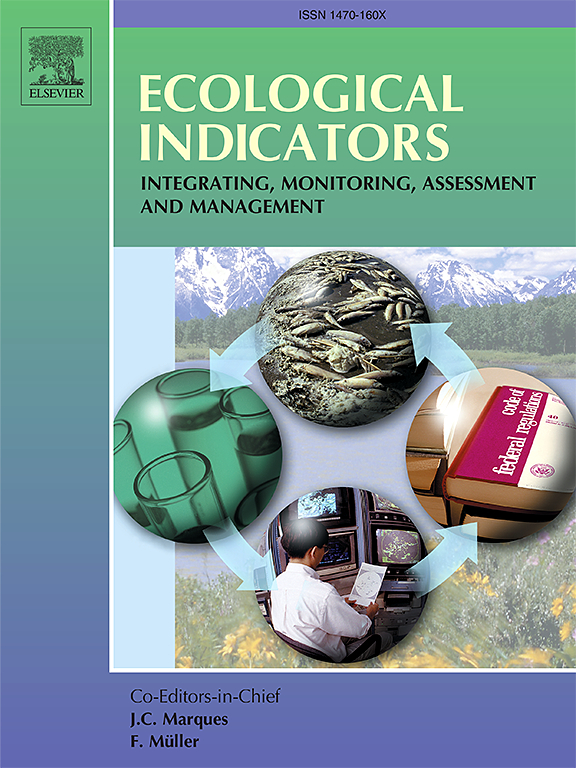Multispecies occupancy models unravel reduced colonization probabilities in plants from the unique Amazonian cangas
IF 7
2区 环境科学与生态学
Q1 ENVIRONMENTAL SCIENCES
引用次数: 0
Abstract
Species extinction rates have surpassed background rates in the contemporary times, triggering a sixth global mass extinction event. Failure to prevent massive extinctions may be related to the lack of efficient tools to estimate local and regional population decline and to identify where declining species likely occur. We used a set of 22 plant species distributed in a globally unique ecosystem, the eastern Amazonian mosaics of forests, iron-rich open “cangas” and iron mine lands, as a model to test whether dynamic multispecies occupancy models can be used to assess population decline. Based on the metapopulation equilibrium between colonization and extinction probabilities compared across 90 mining plots and 60 control plots, we estimate that 45.4 % of the sampled species show no evidence of population decline. For 18.2 % of the species, we found negative equilibrium for both mining and control plots. For 36.4 % of the species, we found negative equilibrium only in 2.22–23.3 % of the mining plots, although equilibrium values were similar to those estimated for most control plots. Negative equilibrium was more associated with the reduced colonization probabilities than with elevated extinction probabilities. Our results indicate that for some wide-ranging species, negative metapopulation equilibrium was restricted to mining plots, indicating sensitivity of these species to environmental changes caused by mining. For some endemic species, apparent population declines are more likely to be occurring due to natural causes than to the negative effects of mining.
求助全文
约1分钟内获得全文
求助全文
来源期刊

Ecological Indicators
环境科学-环境科学
CiteScore
11.80
自引率
8.70%
发文量
1163
审稿时长
78 days
期刊介绍:
The ultimate aim of Ecological Indicators is to integrate the monitoring and assessment of ecological and environmental indicators with management practices. The journal provides a forum for the discussion of the applied scientific development and review of traditional indicator approaches as well as for theoretical, modelling and quantitative applications such as index development. Research into the following areas will be published.
• All aspects of ecological and environmental indicators and indices.
• New indicators, and new approaches and methods for indicator development, testing and use.
• Development and modelling of indices, e.g. application of indicator suites across multiple scales and resources.
• Analysis and research of resource, system- and scale-specific indicators.
• Methods for integration of social and other valuation metrics for the production of scientifically rigorous and politically-relevant assessments using indicator-based monitoring and assessment programs.
• How research indicators can be transformed into direct application for management purposes.
• Broader assessment objectives and methods, e.g. biodiversity, biological integrity, and sustainability, through the use of indicators.
• Resource-specific indicators such as landscape, agroecosystems, forests, wetlands, etc.
 求助内容:
求助内容: 应助结果提醒方式:
应助结果提醒方式:


